Growing low-light vines in your bedroom can greatly improve sleep quality through their natural air-purifying properties and calming presence. You’ll discover that these resilient plants thrive in spaces with as little as 2-4 hours of indirect sunlight daily, making them perfect for north-facing windows or dimly lit corners. From the cascading tendrils of Pothos to the delicate strands of String of Hearts, each vine offers unique benefits that transform ordinary bedrooms into tranquil sanctuaries. Let’s explore how these botanical companions can enhance your sleep environment.

Contents
- 1 Pothos: The Perfect Starter Vine for Low-Light Spaces
- 2 English Ivy: Classic Elegance in Shaded Corners
- 3 Philodendron: Versatile Varieties for Dark Bedrooms
- 4 String of Hearts: Delicate Chains for Dreamy Settings
- 5 Creeping Fig: Compact Climbers for Peaceful Nights
- 6 Swedish Ivy: Low-Maintenance Trailing Beauty
- 7 Wax Plant: Sweet-Scented Bedroom Vines
- 8 Japanese Pothos: Minimal Light, Maximum Impact
- 9 Chain of Nickels: Unique Shapes for Sleepy Spaces
Pothos: The Perfect Starter Vine for Low-Light Spaces
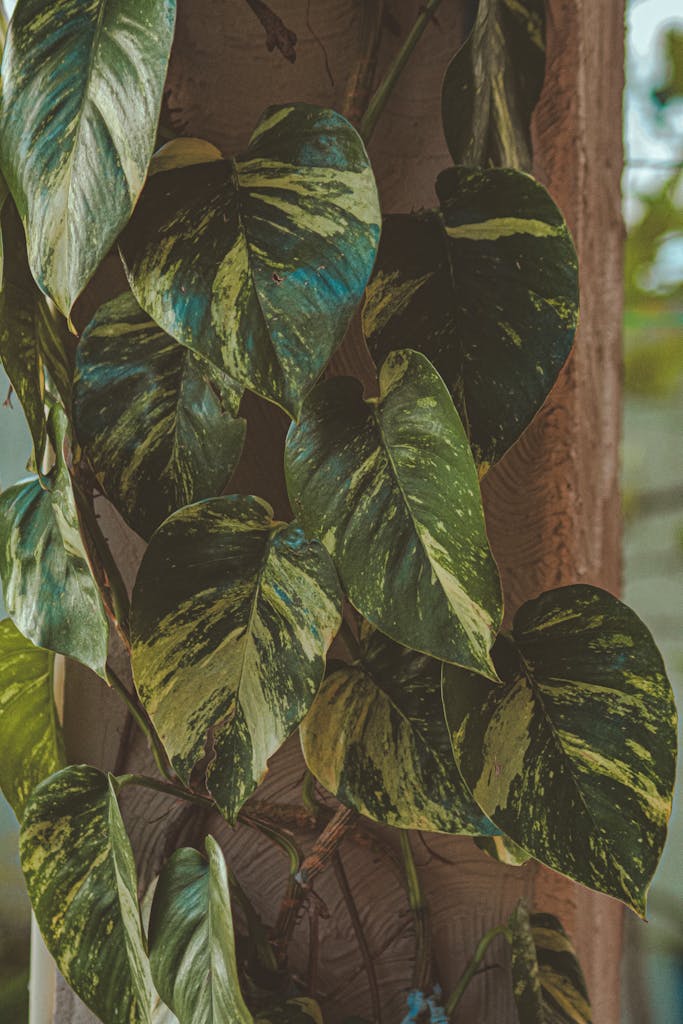
Pothos (Epipremnum aureum) is a versatile and forgiving vine that thrives in low-light conditions, making it an excellent choice for bedroom spaces with minimal natural light. Its heart-shaped leaves come in various patterns and colors, from solid green to variegated forms with white, yellow, or cream markings. Known for its air-purifying qualities and easy maintenance, pothos can grow several feet long and can be trained to climb or allowed to trail from hanging baskets or high shelves.
- Light: Tolerates low to moderate indirect light; avoid direct sunlight which can burn leaves
- Water: Allow top 1-2 inches of soil to dry between waterings; water less frequently in winter
- Soil: Well-draining potting mix with good aeration
- Humidity: Adaptable to average indoor humidity levels (40-60%)
- Temperature: Prefers 60-80°F (15-27°C)
- Fertilizer: Feed with balanced liquid fertilizer every 4-6 weeks during growing season
- Container: Any well-draining pot with drainage holes
- Pruning: Trim occasionally to maintain desired length and promote bushier growth
English Ivy: Classic Elegance in Shaded Corners
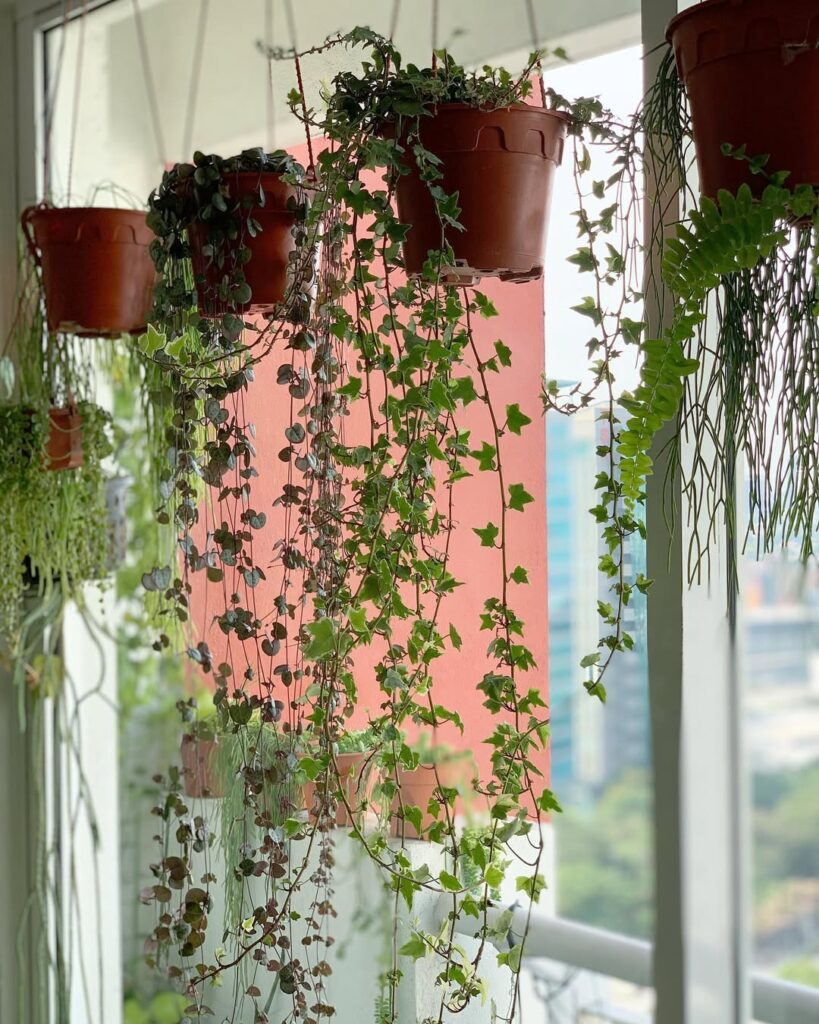
English Ivy (Hedera helix) brings timeless sophistication to dimly lit bedroom spaces with its cascading vines and distinctive lobed leaves. This adaptable evergreen climber creates an elegant, classic aesthetic while effectively purifying indoor air. Its deep green foliage can either trail from hanging baskets or climb walls and trellises, making it a versatile choice for adding natural drama to shaded bedroom corners.
- Light: Thrives in low to moderate indirect light; avoid direct sunlight
- Water: Keep soil consistently moist but not waterlogged; water when top inch of soil feels dry
- Soil: Well-draining potting mix rich in organic matter
- Humidity: Prefers moderate to high humidity; mist leaves regularly
- Temperature: Does best between 50-70°F (10-21°C)
- Fertilizer: Feed monthly during growing season with balanced liquid fertilizer
- Support: Provide trellis, moss pole, or other climbing structure if vertical growth is desired
Philodendron: Versatile Varieties for Dark Bedrooms

Philodendrons are excellent choices for dark bedrooms due to their exceptional adaptability to low-light conditions. These tropical vines come in various forms, from trailing varieties like the heartleaf philodendron to larger specimens like the brasil philodendron, all of which can thrive in shadier spaces. Their glossy, often heart-shaped leaves add a lush, jungle-like feel to bedroom spaces while efficiently purifying the air, making them both decorative and functional additions to darker living areas.
- Light: Tolerates low to moderate indirect light; avoid direct sunlight which can scorch leaves
- Water: Water when top 1-2 inches of soil feels dry; reduce watering in winter
- Soil: Well-draining, loose potting mix rich in organic matter
- Humidity: Prefers moderate to high humidity (50-60%)
- Temperature: Thrives in 65-80°F (18-27°C)
- Fertilizer: Feed monthly during growing season with balanced liquid fertilizer
- Propagation: Easily propagated through stem cuttings in water or soil
- Potting: Use containers with drainage holes; repot every 2-3 years
String of Hearts: Delicate Chains for Dreamy Settings
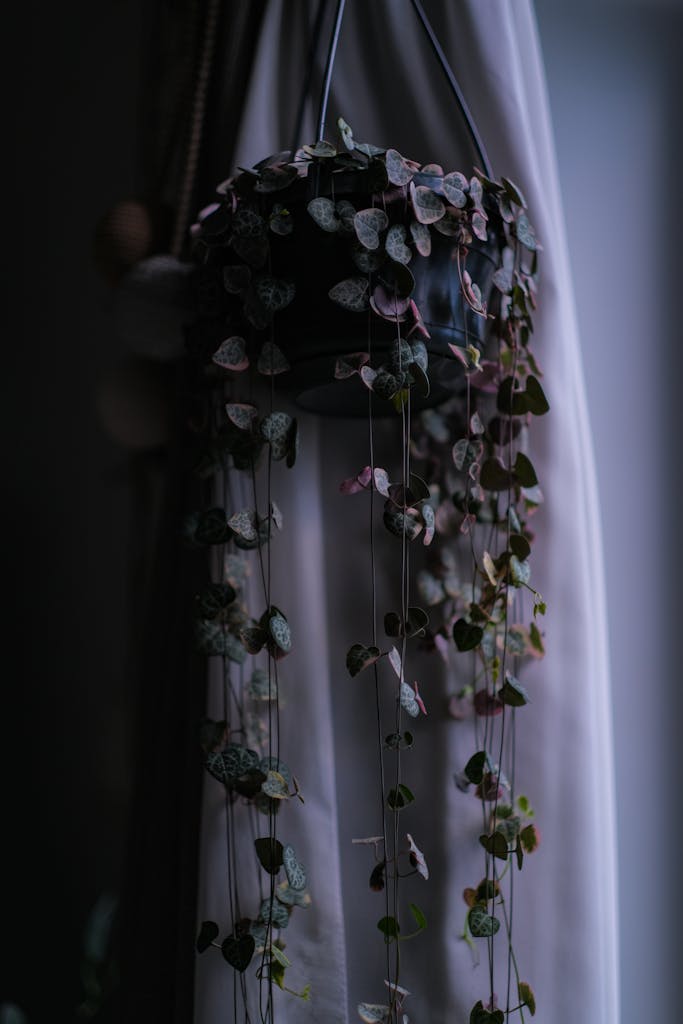
String of Hearts (Ceropegia woodii) creates an enchanting cascade of delicate, heart-shaped leaves strung along thin, purple-tinted vines that can trail several feet in length. This dainty succulent vine features variegated pink and silver patterns on its foliage, making it a romantic choice for hanging baskets or high shelves in bedrooms. Its compact growing habit and tolerance for lower light conditions make it an excellent choice for creating a soft, whimsical atmosphere without overwhelming the space.
- Light: Bright indirect light to partial shade; can tolerate low light but may grow slower
- Water: Allow soil to dry between waterings; water sparingly in winter
- Soil: Well-draining succulent mix with added perlite
- Temperature: 65-80°F (18-27°C)
- Humidity: Average room humidity (40-50%)
- Container: Hanging basket or pot with drainage holes
- Fertilizer: Feed monthly with diluted succulent fertilizer during growing season
- Propagation: Easy to propagate from stem cuttings or tubers
Creeping Fig: Compact Climbers for Peaceful Nights
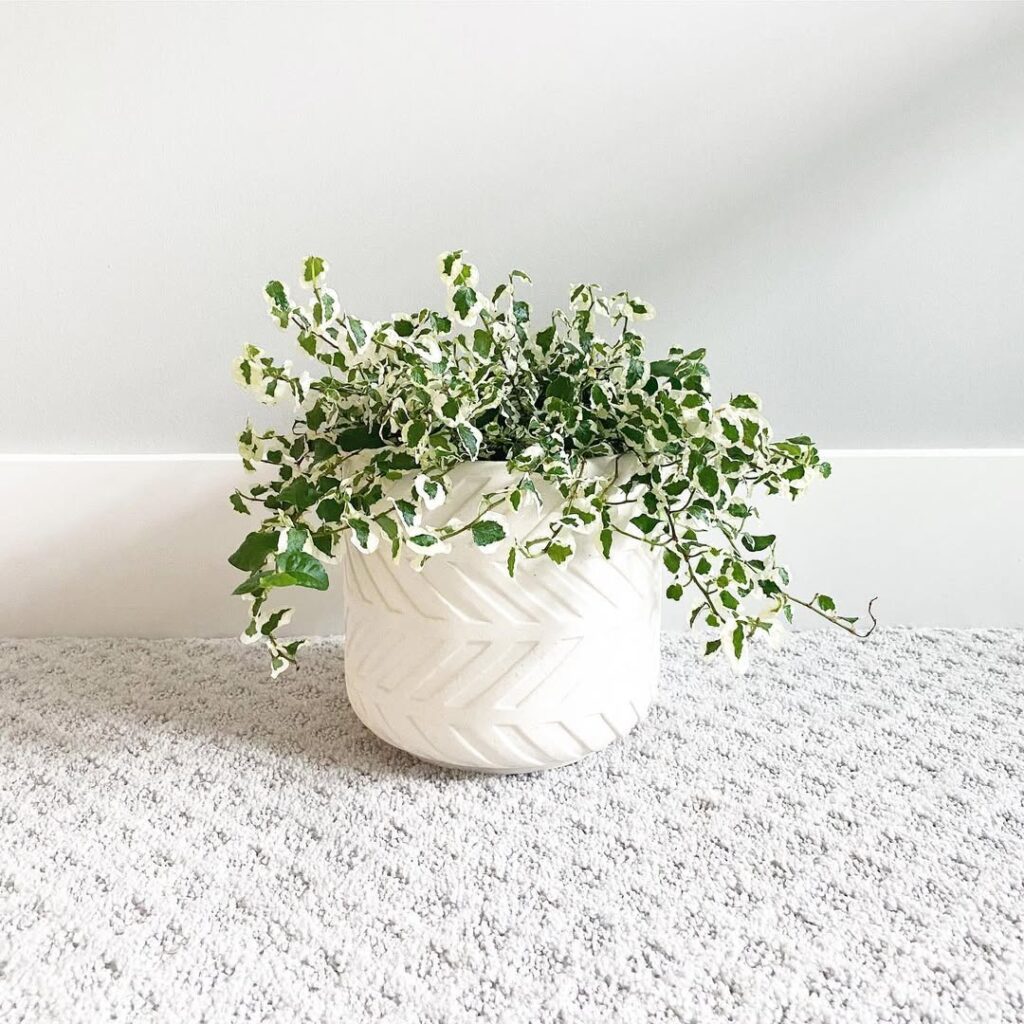
Creeping Fig (Ficus pumila) is a delicate, petite vine that’s perfect for adding a touch of greenery to darker bedroom spaces. This slow-growing climber features small, heart-shaped leaves that create an elegant cascading effect as they climb walls or trail from hanging baskets. Its compact growth habit and ability to thrive in low-light conditions make it an excellent choice for creating a serene bedroom atmosphere without overwhelming the space.
- Light: Thrives in low to moderate indirect light; avoid direct sunlight
- Water: Keep soil consistently moist but not waterlogged; water when top inch of soil feels dry
- Soil: Well-draining, rich potting mix
- Humidity: Prefers moderate to high humidity; mist occasionally
- Temperature: 65-75°F (18-24°C)
- Fertilizer: Feed with balanced liquid fertilizer every 2-3 months during growing season
- Support: Requires a surface to climb; can attach to walls naturally with aerial roots
- Pruning: Trim regularly to maintain desired shape and prevent overgrowth
Swedish Ivy: Low-Maintenance Trailing Beauty
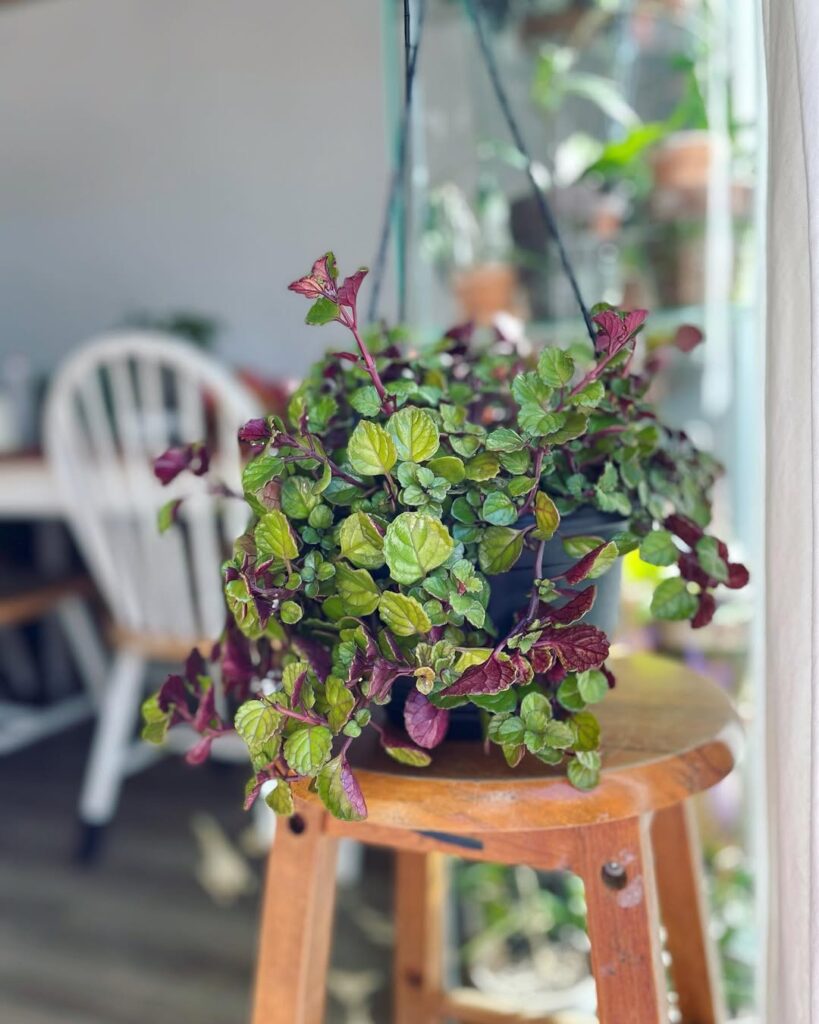
Swedish Ivy (Plectranthus verticillatus) is a versatile trailing plant that thrives as a bedroom vine despite its misleading name, as it’s neither Swedish nor a true ivy. This low-maintenance plant features cascading stems adorned with rounded, glossy leaves that have scalloped edges. Its compact growth habit and ability to adapt to indoor conditions make it an excellent choice for hanging baskets or elevated shelves where its vines can elegantly drape downward.
- Light: Tolerates low to moderate indirect light; avoid direct sunlight which can scorch leaves
- Water: Keep soil consistently moist but not waterlogged; allow top inch of soil to dry between waterings
- Soil: Well-draining potting mix rich in organic matter
- Temperature: Prefers 60-75°F (15-24°C)
- Humidity: Adapts to average indoor humidity levels
- Fertilizer: Feed monthly during growing season with balanced liquid fertilizer
- Pruning: Trim occasionally to maintain shape and promote bushier growth
- Container: Use pots with drainage holes to prevent root rot
Wax Plant: Sweet-Scented Bedroom Vines
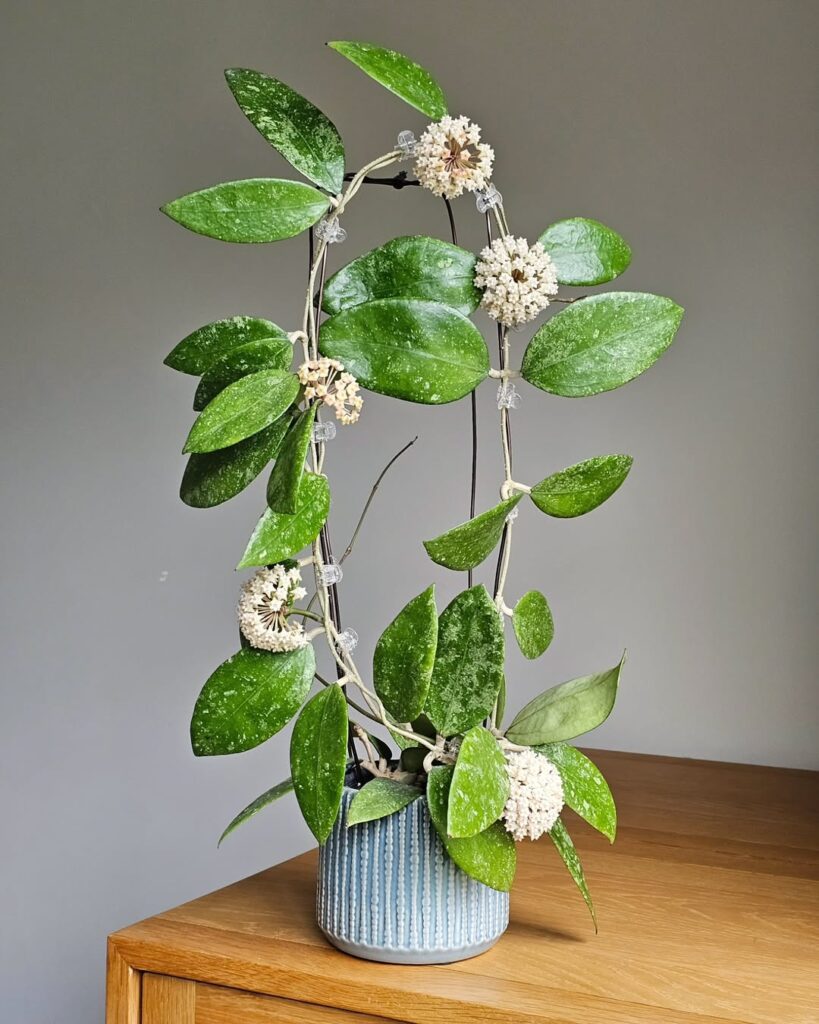
The Wax Plant (Hoya carnosa) is a beloved trailing vine known for its thick, waxy leaves and clusters of star-shaped, porcelain-like flowers that emit a sweet fragrance, especially at night. This low-maintenance houseplant is perfect for bedrooms due to its ability to thrive in low-light conditions and its gentle, pleasant scent that won’t overwhelm the space. Native to Eastern Asia and Australia, the wax plant can grow several feet long and develops a striking appearance as it matures.
- Light: Bright indirect light to partial shade; can tolerate low light but may not flower
- Water: Allow soil to dry between waterings; water sparingly in winter
- Soil: Well-draining potting mix with added orchid bark or perlite
- Humidity: Moderate to high; benefits from occasional misting
- Temperature: 60-80°F (15-27°C)
- Fertilizer: Feed monthly during growing season with balanced houseplant fertilizer
- Container: Use hanging baskets or containers with good drainage
- Support: Provide trellis or support for climbing
Japanese Pothos: Minimal Light, Maximum Impact
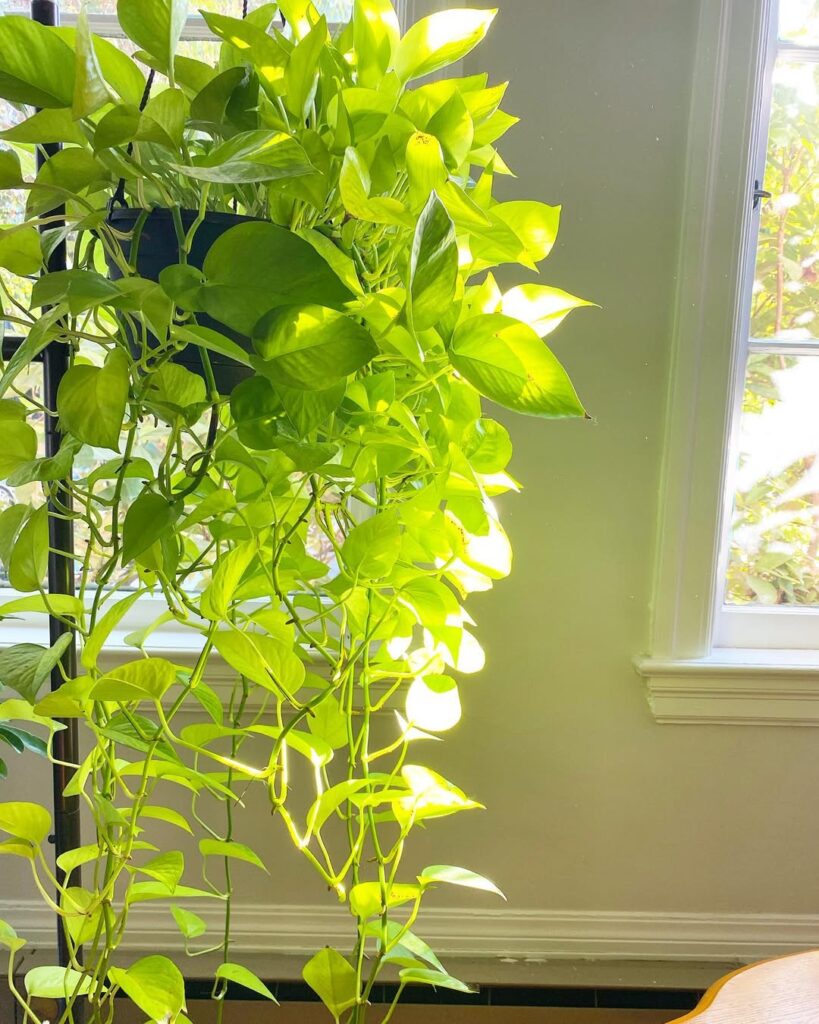
Japanese Pothos (Epipremnum aureum ‘Neon’) is a striking variety of the classic pothos plant, featuring vibrant chartreuse-colored foliage that adds a bold pop of color even in dim spaces. This trailing vine maintains its distinctive bright coloring in low-light conditions, making it an excellent choice for bedroom corners and darker spaces. Its heart-shaped leaves grow along sturdy vines that can either cascade from hanging baskets or climb up trellises, while requiring minimal maintenance to thrive.
- Light: Thrives in low to medium indirect light; avoid direct sunlight which can burn leaves
- Water: Allow top 1-2 inches of soil to dry between waterings; water less frequently in winter
- Soil: Well-draining potting mix with good aeration
- Humidity: Tolerates average room humidity but prefers 50-70%
- Temperature: Comfortable in normal room temperatures between 60-80°F (15-27°C)
- Fertilizer: Feed with balanced liquid fertilizer every 4-6 weeks during growing season
- Container: Any container with drainage holes; plastic or ceramic work well
Chain of Nickels: Unique Shapes for Sleepy Spaces
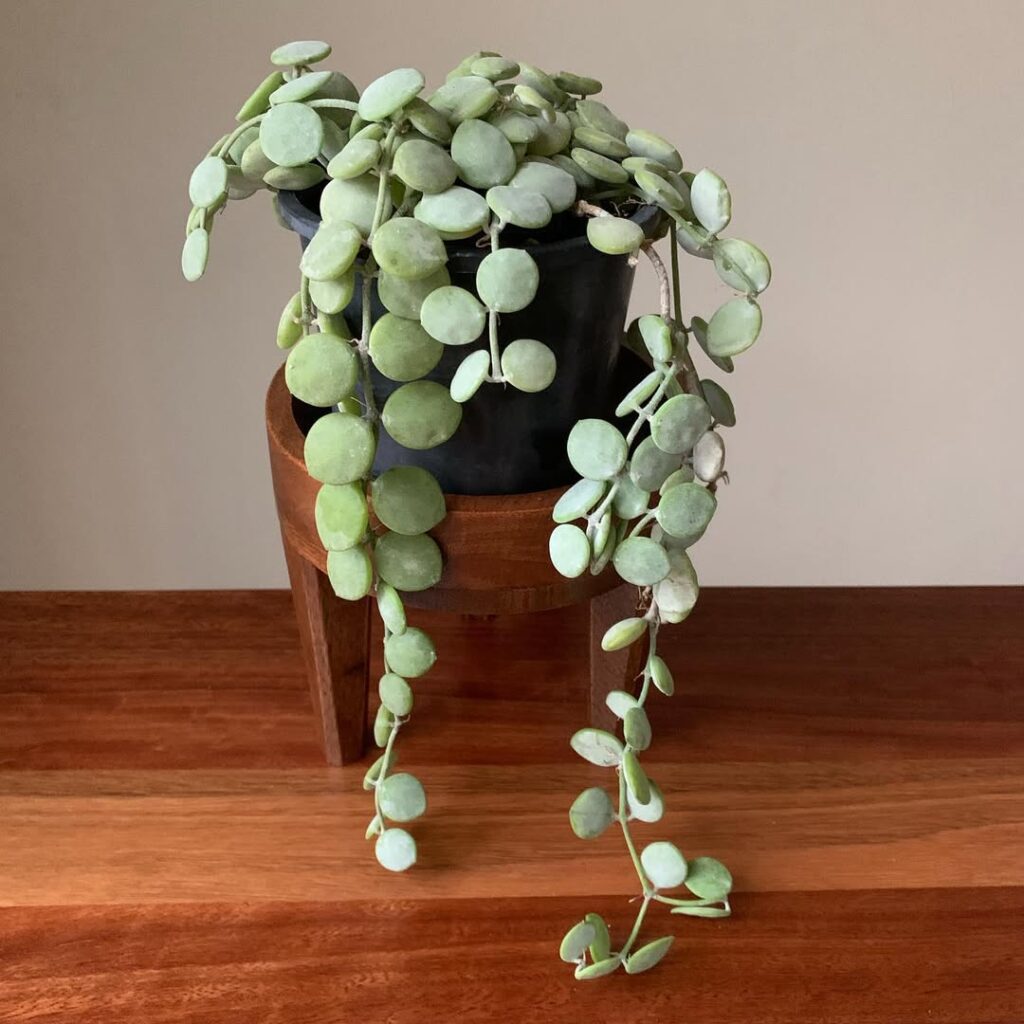
Chain of Nickels (Dischidia nummularia) is a unique trailing vine with small, round leaves that resemble a string of coins, making it perfect for hanging baskets or climbing walls in low-light bedrooms. This epiphytic plant features thick, succulent-like foliage that grows in pairs along thin stems, creating an elegant cascading effect that can add visual interest to dimly lit corners without taking up much space.
- Light: Thrives in low to moderate indirect light; avoid direct sunlight
- Water: Allow top inch of soil to dry between waterings; reduce watering in winter
- Soil: Well-draining, loose epiphytic mix with orchid bark, peat moss, and perlite
- Humidity: Prefers moderate to high humidity, 50-70%
- Temperature: Maintains best growth between 60-80°F (15-27°C)
- Fertilizer: Feed monthly with diluted balanced fertilizer during growing season
- Container: Use hanging baskets or mounted planters with good drainage
